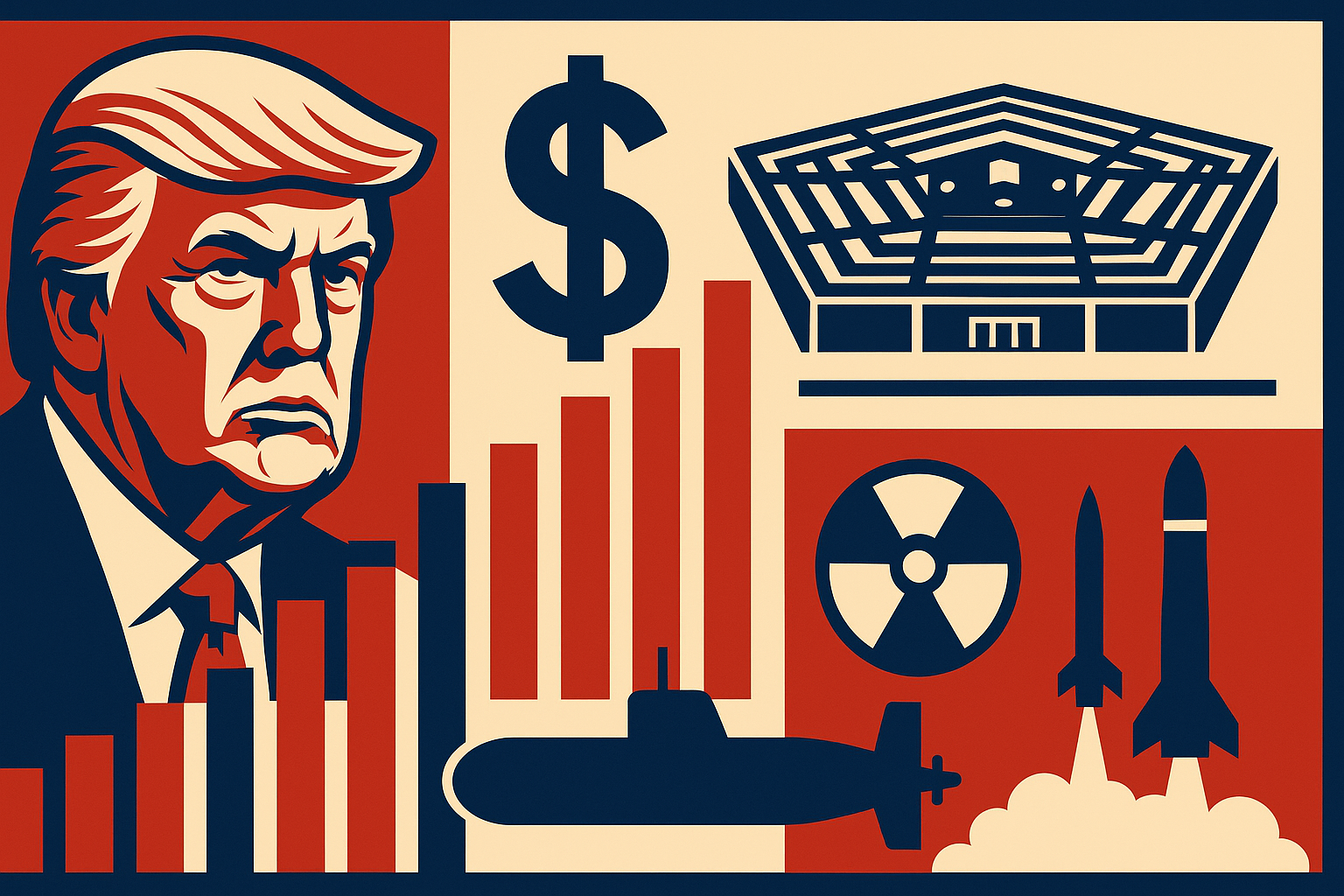Despite President Donald Trump’s earlier pledges to root out waste and fraud in the Pentagon—with the help of Elon Musk’s Defense Optimization and Government Efficiency (DOGE) task force—the Department of Defense has emerged largely untouched from his latest round of federal budget cuts.
In fact, the Trump administration has proposed a historic $1.01 trillion defense budget for fiscal year 2026, marking the first time U.S. military spending would surpass the $1 trillion threshold. The proposal exceeds the previous year’s enacted budget by more than $100 billion.
Minimal Savings from DOGE Initiative
In February, Trump confidently stated that Musk would uncover “hundreds of billions of dollars” in Pentagon waste. But according to the Department of Defense’s own figures, the direct savings attributed to the DOGE initiative totaled just $6 billion—less than 1% of the proposed budget.
Despite that, the administration is pushing forward with an initial $119.3 billion tranche of the defense and nuclear weapons budget through Trump’s sweeping tax and spending package—nicknamed the “one, big beautiful bill”—which passed the Senate on July 1 and now awaits approval in the House.
Priorities Shift: Defense Up, Domestic Programs Down
While the defense budget increases, the administration and Republican-majority Congress are targeting deep cuts to domestic programs. According to the Congressional Budget Office, over the next 10 years the reconciliation bill would:
-
Slash $1 trillion from Medicaid
-
Cut $300 billion from food stamp programs
-
Reduce funding for clean energy, education, and foreign aid
Defense Secretary Pete Hegseth defended the increase before the Senate Armed Services Committee, claiming it would “end four years of chronic underinvestment in our military.”
House Armed Services Committee Chair Mike Rogers (R-AL) echoed the sentiment, saying the boost is vital to “restore American deterrence” and modernize U.S. forces.
Critics Sound Alarm Over Budget Growth and Oversight Gaps
However, some of Trump’s own allies, including former White House strategist Steve Bannon, have criticized the defense budget’s unchecked expansion.
“You can’t talk about fraud and waste in D.C. unless you’re willing to go after the Pentagon,” Bannon said on a podcast in April. “And since DOGE went in? Crickets.”
Analysts also flagged concerns about transparency. William Hartung of the Quincy Institute noted the Pentagon omitted key documentation in its budget rollout, making it difficult for Congress to properly assess priorities.
“There’s a lot missing if you’re a member of Congress trying to evaluate this,” Hartung said.
Former Rep. John Tierney, now with the Center for Arms Control and Nonproliferation, warned that lawmakers across party lines have grown reluctant to challenge defense spending, calling the process politically untouchable.
Billions Earmarked for Nuclear and Missile Defense Programs
The 2026 defense proposal sets aside approximately $85 billion for nuclear weapons programs and missile defense, including Trump’s controversial $175 billion “Golden Dome” missile shield initiative.
The bulk of the funding supports America’s nuclear triad—long-range bombers, intercontinental ballistic missiles (ICBMs), and nuclear submarines—as part of an expansive $1.7 trillion nuclear modernization plan.
But these programs are not without issues. The Government Accountability Office recently estimated that costs for the new Sentinel ICBM, intended to replace the aging Minuteman III, will climb to $170 billion—largely due to a miscalculation that the new missile won’t fit in legacy silos.
The administration has requested $4.5 billion for Sentinel development in FY2026, though that figure does not include the cost of building new silos.
NNSA Budget Grows Despite Staffing Shortfalls
The National Nuclear Security Administration (NNSA), which manages nuclear warhead development and maintenance, is set to receive a nearly 30% increase in funding for its Weapons Activities division—a $5.56 billion boost.
However, watchdogs remain skeptical of the agency’s ability to manage the funds effectively. A USA TODAY investigation in May revealed long-standing staffing shortages at the NNSA, particularly among technical experts needed to oversee plutonium pit production and nuclear modernization projects.
Despite repeated congressional testimony about these workforce gaps, the FY2026 budget request does not include major funding for additional federal personnel.
“The NNSA funding boost is a recipe for wasting money,” said Hartung.
As lawmakers prepare for final negotiations, the defense budget remains a flashpoint in Trump’s broader fiscal strategy—one that dramatically expands military funding while cutting deeply into domestic services.
The full reconciliation bill is expected to reach President Trump’s desk by July 4, meeting his self-imposed deadline.



